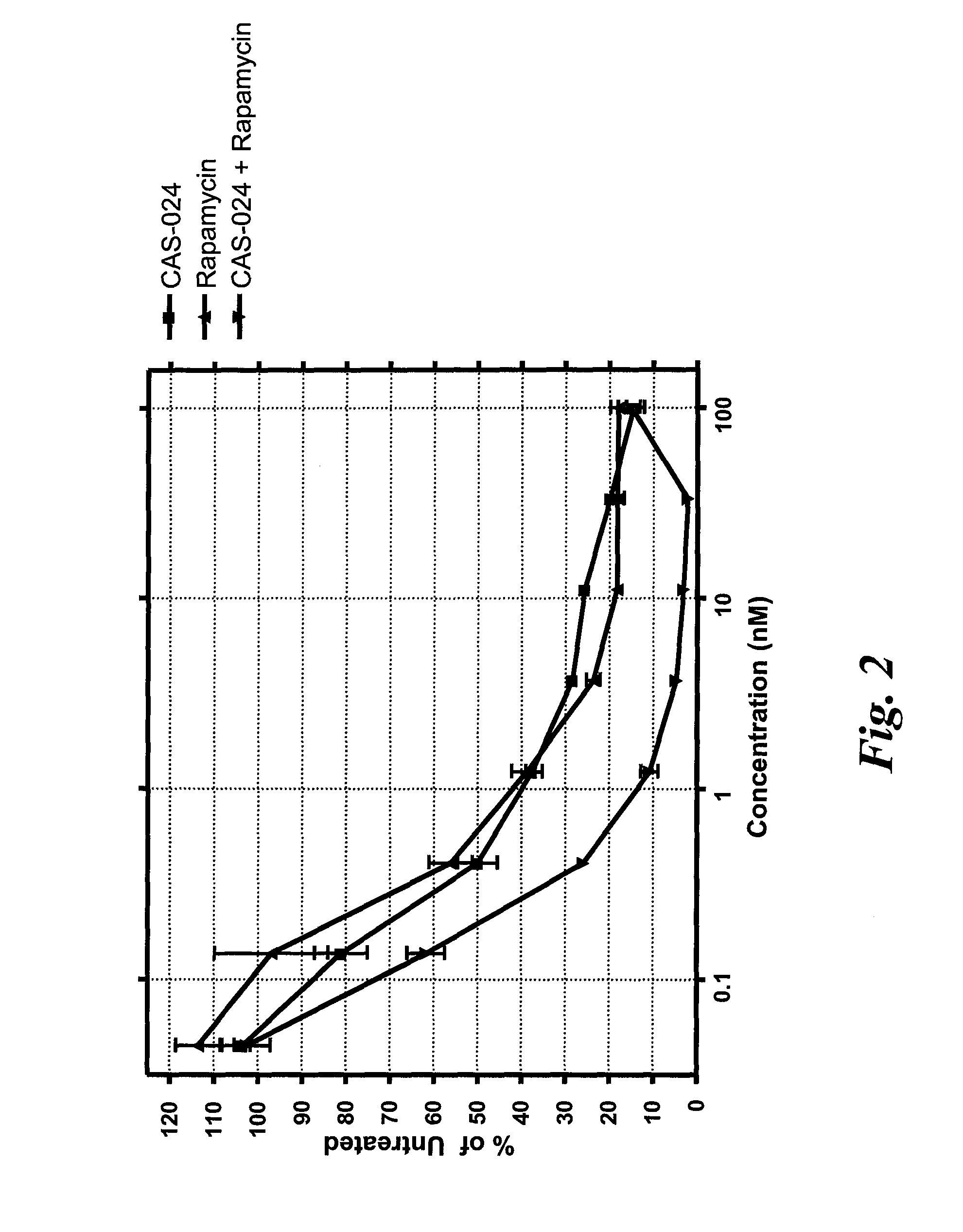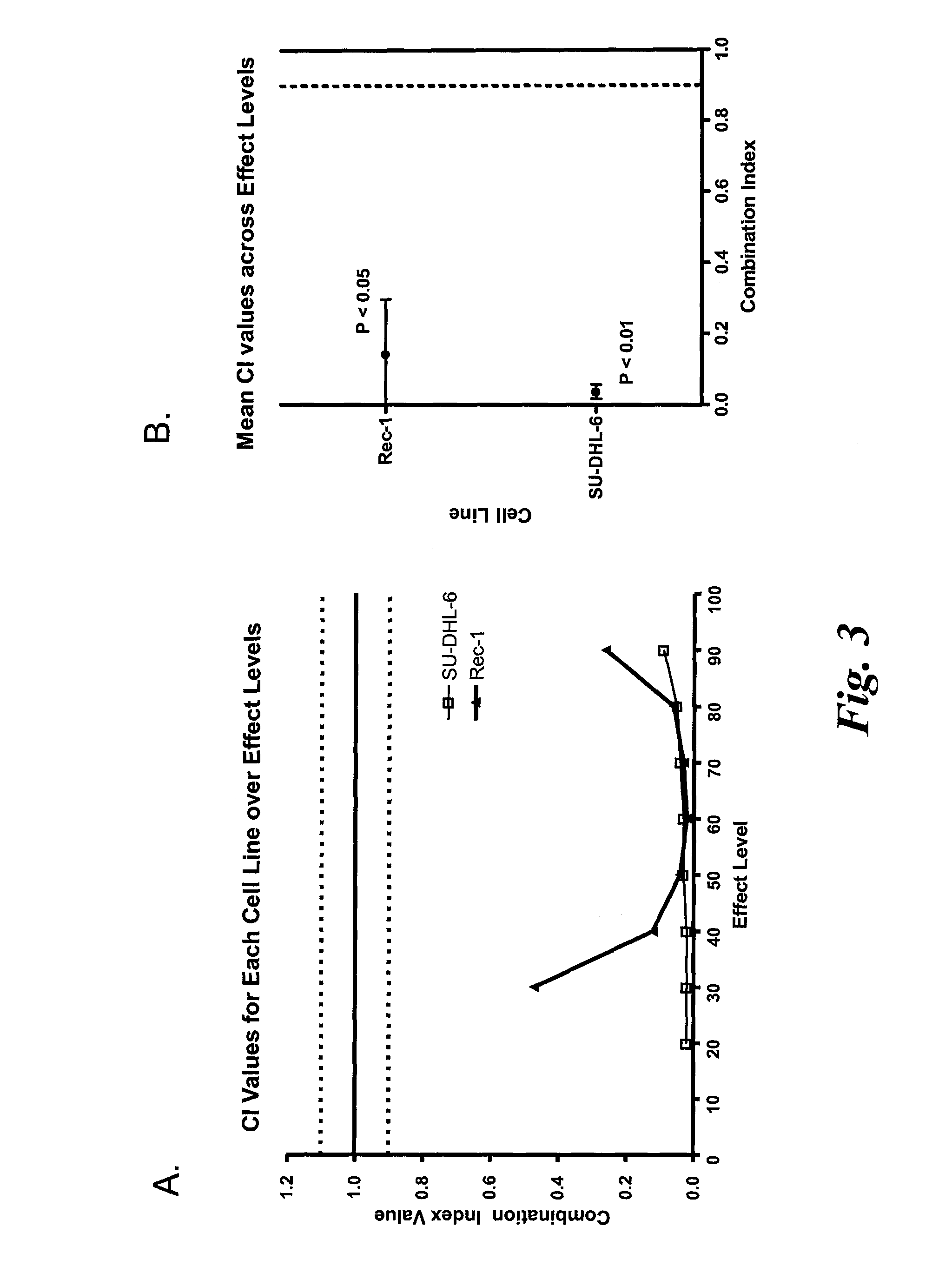Cd37 immunotherapeutic combination therapies and uses thereof
a combination therapy and immunotherapy technology, applied in the field of cd37specific binding molecules, can solve problems such as the failure of the immune system to function normally, and achieve the effect of reducing the number of b-cells
- Summary
- Abstract
- Description
- Claims
- Application Information
AI Technical Summary
Benefits of technology
Problems solved by technology
Method used
Image
Examples
example 1
CD37-Specific Binding Molecules
[0200]Various CD37-specific binding proteins can be made with exemplary components provided herein. For example, CD37-specific antibodies or SMIP molecules can be made, and these molecules can be chimeric, humanized, or human. More specifically, preferred light chain variable region CDRs are found in SEQ ID NOS:236-240 and 247-254 and preferred heavy chain variable domain CDRs include SEQ ID NOS:241-245 and 247-254. Also, preferred light and heavy chain variable regions are provided in SEQ ID NOS:236-240 and SEQ ID NOS:241-245, respectively. Preferred light and heavy chain variable regions may also be found in SEQ ID NOS:247-254. Preferred variable domain linkers include SEQ ID NOS:225-229, while preferred hinges include SEQ ID NOS:230-235.
[0201]Preferred CD37-specific SMIP polypeptides include SEQ ID NOS:6, 8, 10, 12, 14, 16, 18, 20, 22, 24, 26, 28, 30, 32, 34, 36, 38, 40, 42, 44, 46, 48, 52, 80, 82, 84, 86, 88, 222 and 262 (but without the leader seq...
example 2
Growth Inhibition by CD37-Specific CAS-024 and Rapamycin Combination
[0203]CAS-024 [G28-1 VH (M99F, Y102S)-VL (T25A) scFv (SSC—P) H WCH2 WCH3] is described in Example 1. A nucleotide sequence encoding CAS-024 (including a leader sequence) is set forth in SEQ ID NO:221. Rapamycin (Sigma, St. Louis, Mo.) was dissolved in DMSO and stored at −20° C. until use. Human cell lines expressing CD37 used were Rec-1 (a Mantle Cell Lymphoma cell line) and SU-DHL-6 (Diffuse Large Cell Lymphoma cell line) (both from DSMZ, Braunschweig, Germany).
[0204]Rec-1 and SU-DHL-6 cells were plated at 1×104 cells / well in 100 μL medium in 96-well plates. Cells were treated with various concentrations of CAS-024 (for concentrations, see FIGS. 1 and 2) that had been preincubated with anti-human IgG F(ab)′2 and plates were incubated for 96 hr at 37° C., 5% CO2 in the presence of serial dilutions of rapamycin. The final volume in each well was 150 μL. After incubation, plates were cooled to room temperature and lab...
example 3
Growth Inhibition by CD37-Specific CAS-024 and Temsirolimus Combination
[0207]The effects of the combination of CAS-024 with another mTOR inhibitor, temsirolimus, on Rec-1 and SU-DHL-6 cell growth and the CI were determined using the methods as described in Example 2. The concentrations of CAS-024 and temsirolimus used are indicated in FIGS. 4 and 5.
[0208]The results show that the combination of CAS-024 with temsirolimus inhibited SU-DHL-6 (FIG. 4) and Rec-1 (FIG. 5) cell growth more than either compound alone. The CI values measured show that CAS-024 in combination with temsirolimus synergistically inhibited SU-DHL-6 and Rec-1 cell growth (FIGS. 6-8).
PUM
| Property | Measurement | Unit |
|---|---|---|
| Composition | aaaaa | aaaaa |
| Chemotherapeutic properties | aaaaa | aaaaa |
Abstract
Description
Claims
Application Information
 Login to View More
Login to View More - R&D
- Intellectual Property
- Life Sciences
- Materials
- Tech Scout
- Unparalleled Data Quality
- Higher Quality Content
- 60% Fewer Hallucinations
Browse by: Latest US Patents, China's latest patents, Technical Efficacy Thesaurus, Application Domain, Technology Topic, Popular Technical Reports.
© 2025 PatSnap. All rights reserved.Legal|Privacy policy|Modern Slavery Act Transparency Statement|Sitemap|About US| Contact US: help@patsnap.com



